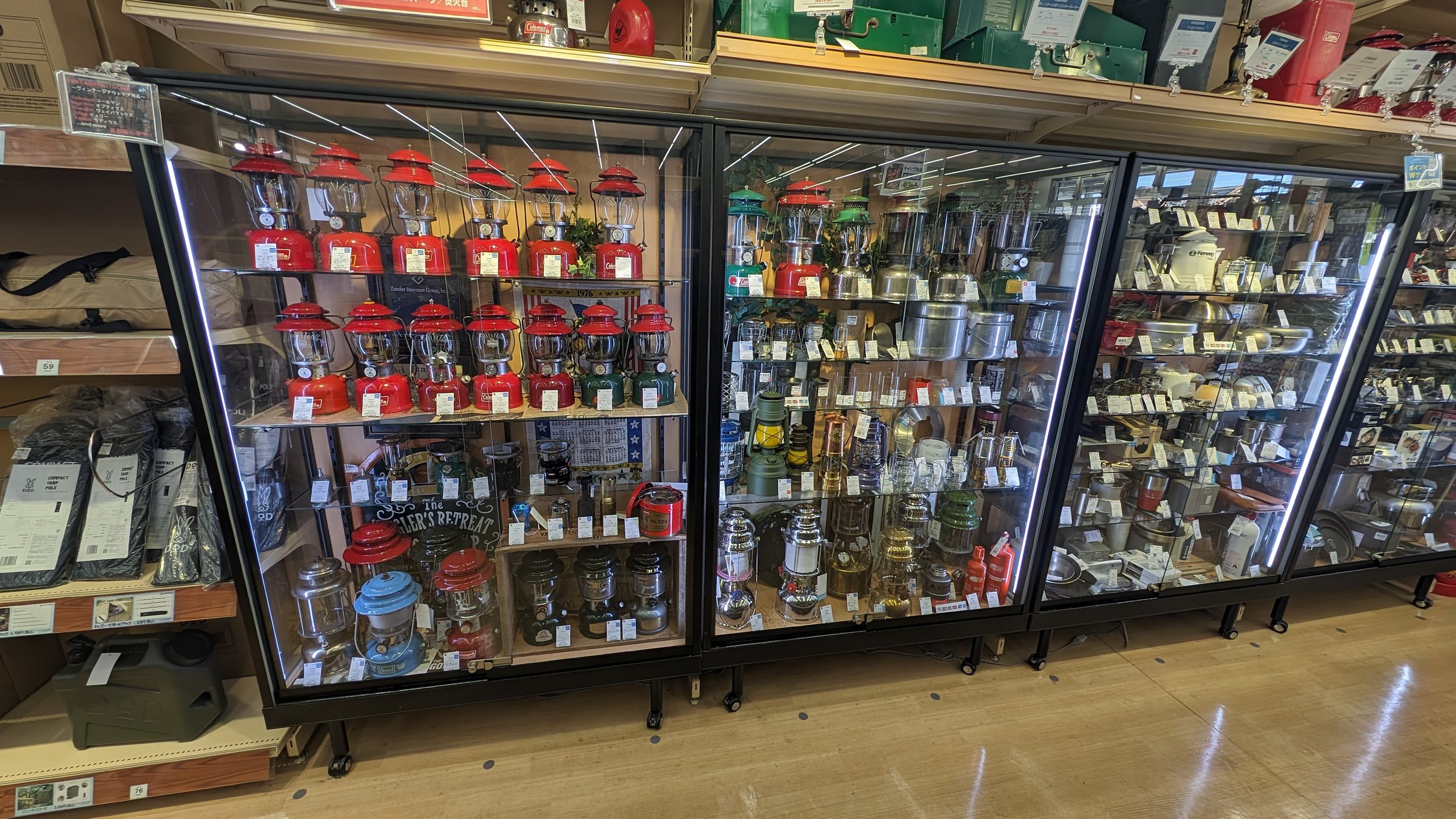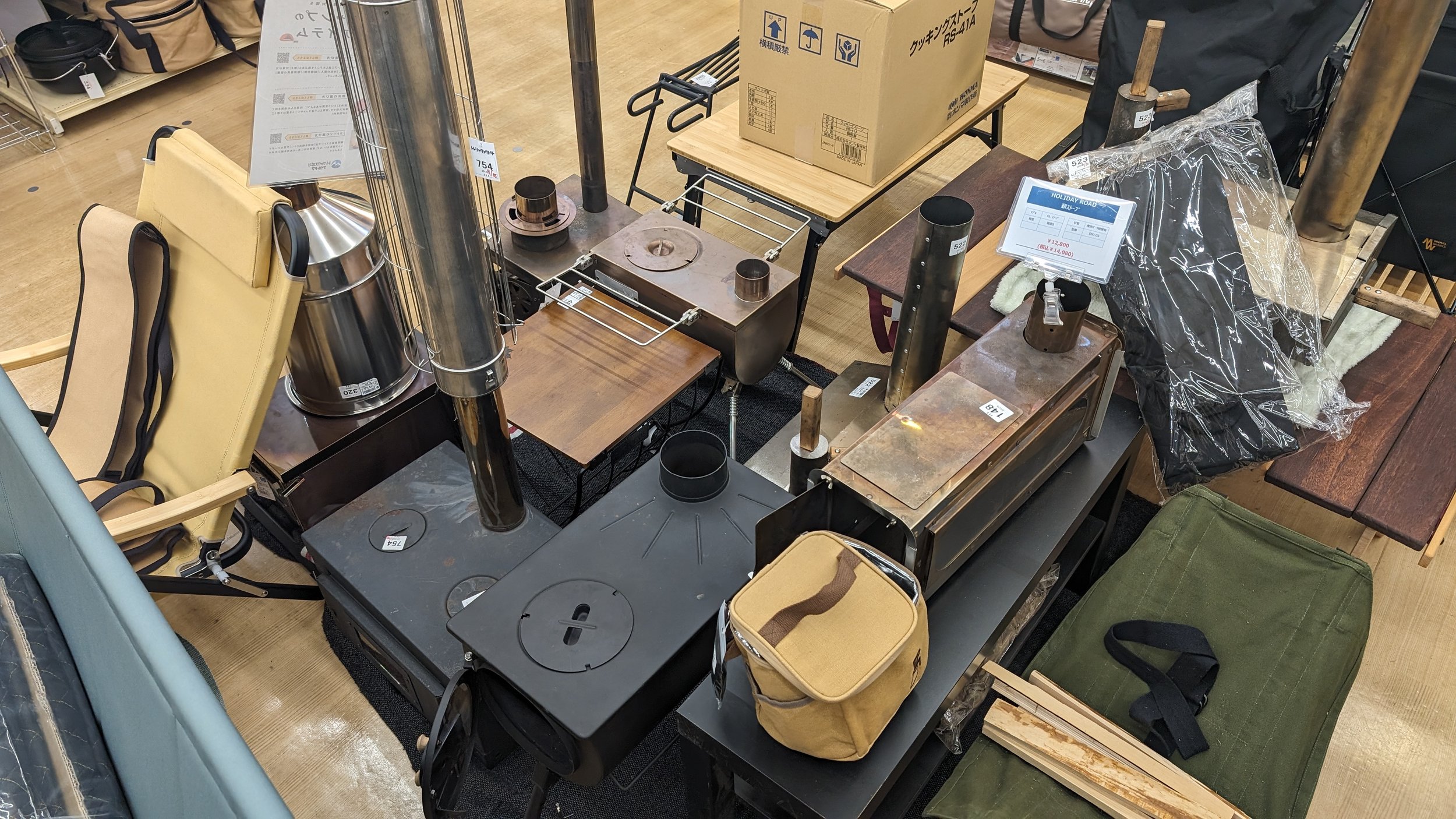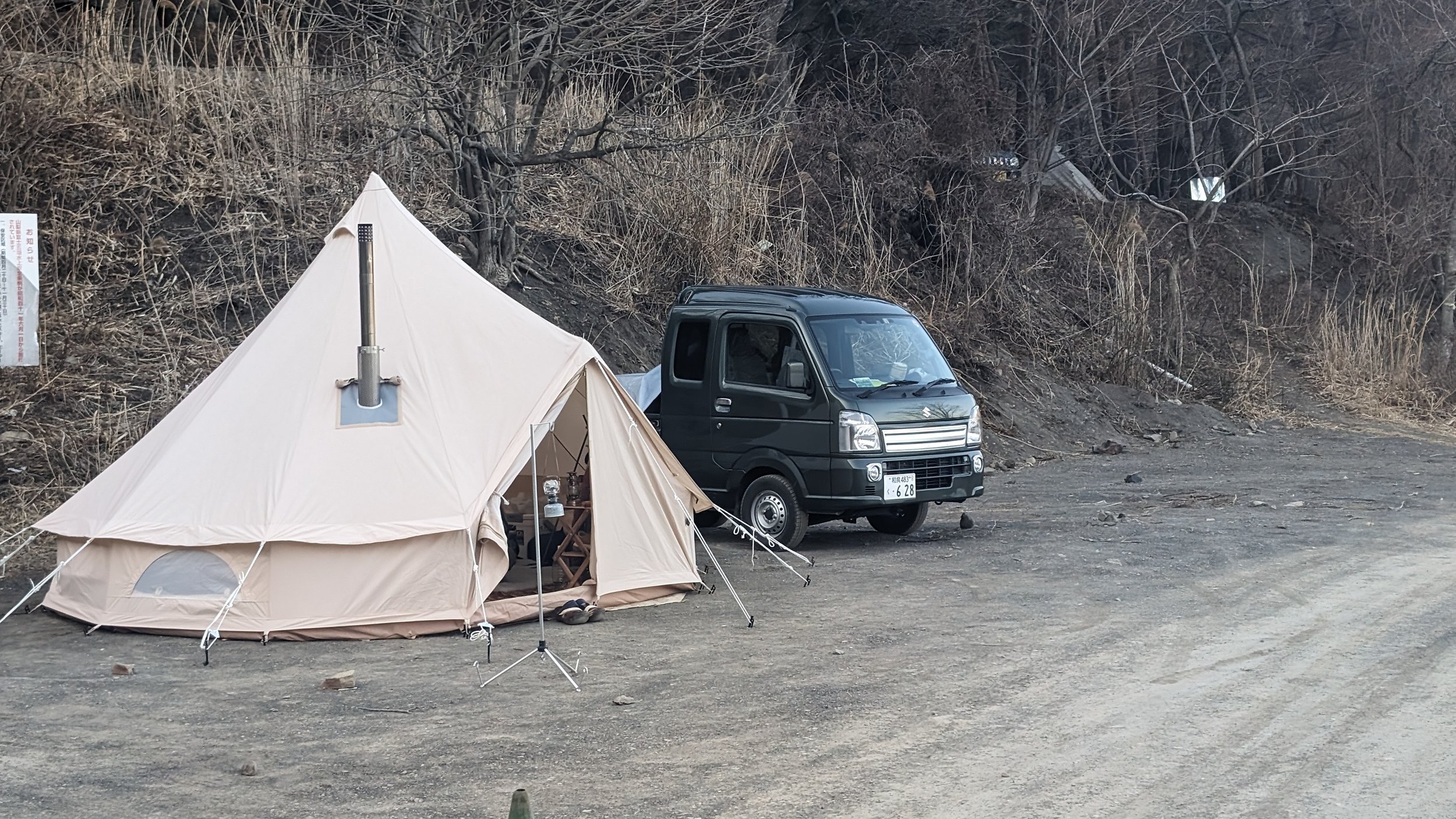Japanese conservatism, camping culture, second hand stores and reflections on Australian camping
Comments and observations on the camping culture we saw in Japan recently, expanding on the last post about testing our gear camping for a month in a Japanese late winter.
A traditional formed earth cob farm store with elevated pitched roof in the Nagano region of Japan
Japan seems to conserve their heritage and traditions almost seamlessly within the new frames. Farming has resisted centralisation for example, so farms are immediately seen everywhere, and with them a widespread rural approach to life, easily seen in the cities as well as the countryside. There’s an inherent retention of heritage in building design, whether it be an active conservation of old buildings, or an aesthetic appreciation of them in the features of newer buildings. Customs and etiquette seem to remain strong, from the removal of shoes indoors, through the prevalence and reminder of shrines, and the central importance of onsens (gender separated public bathing in geothermally heated spring water).
Camping culture in Japan fits into this observation. It is not quite split into two broad categories. The light and hike is about the same as I’ve seen everywhere else in the world - a huge range of products focused on light weight design, achieved through synthetic materials with water phobic treatments, marketed with images of hyperactive recreation, with little if any reference to the past.
(As a side note: I noticed an article in the Japan Times on 10 March 2024 though, titled Japan’s Revered Outdoor Brands Face Down PFAS Challenge by Tomoko Otake. It describes an international restriction on polluting synthetic chemicals used so heavily in outdoor gear, and asked what the Japanese brands might do in response. My suggestion of course, was to revisit heritage and reintroduce ways and products that don’t rely on such chemicals, like wool and waxed canvas.)
The Japanese approach to car and campsite camping on the other hand, seems unique and more interested in a critical appreciation of its legacy. Within well kept camp grounds I saw a critical almost obsessive appreciation of heritage, classic, robust, quality sites and products, brought together with balance into the elegant and super comfortable camp set ups we sometimes glimpse on Instagram and Youtube.
The kids and I were camping in late winter, which is when I thought we’d meet the die-hard and long term committed campers, but we generally did not. Campsites were sparsely used at this time of year, and the campers we did see, while well equipped with beautiful set ups, looked as though they were not too experienced in the use of it all, and their equipment was all brand new, right down to the pegs in the ground.
Here’s a short video taken in the first days of arriving in Japan, when we drove out to Koan Campground on Lake Motosu 本栖湖, where I first started to see some of the Japanese camping culture.
So, like Australia there are lots of first timers or rare timers, but in Japan they kit up with much better gear, and go to the trouble of setting up something very nice and comfortable, even for just an overnight camp.
I think the second hand market makes this possible
Importantly, Japan has a national network of chain stores selling second hand and refurbished camping equipment. So people can pickup good gear for relatively cheap prices, and they can also cash their gear in if they keep it in good condition, rather than store it at home. At a stretch, this might be why I did not see a single store selling cheap rip offs or exceedingly poor quality gear.



Seeing these campsites in person, seeing what the camping stores stock in Japan, seeing how high value items can be resold through a strong network of second hand gear stores, confirmed to me how and why we have a serious problem affecting our camping culture in Australia.
Australian camping has a serious problem
Australia has a dominance of big chain stores that market to a bargain/single use ethos, bringing in an enormous array of really poor quality products that barely last a season if even one use. This over all poor quality acts at reducing the value people place on their camping experiences, which comes full circle and reduces the investment they’re willing to make on the gear they need to go camping. The suppliers have let go of the known and reliable classics, selecting cheap imitations of them instead, with poorly informed ‘innovations’, somehow believing they are supplying demand when in fact they are leading and shaping it. Their styling and merchandising of camping gear leaves a lot to be desired. If you’re lucky, you might see a store with rusted, disused historic equipment on the wall, highlighting the giant chasm between the old and the new approaches to the outdoors in Australia.
The supplier dominance that limits our options this way has eroded our heritage, awareness and critical appreciation of camping overall. It cyclically perpetuates an ignorance in a shortsighted race to the bottom. Today, all three of the biggest chain stores stock almost entirely the same dysfunctional single use products, with most smaller chains copying this business model. The long running rise in popularity of “glamping”, luxury eco tourism, festivals, organic food, off grid living, bushcraft etc, has had seemingly zero impact on what our big brand camping stores think we want or need. Perhaps this is what marketeers call “a gap in the market”, but I suspect that gap is ignored by long term and massive distribution contracts.
Admittedly there are many more factors at play that help perpetuate this problem. There hasn’t been much of a disposable income in working to professional class Australia for quite some time. There hasn’t been a widely shared perspective through people like Les Hiddins or Malcolm Douglas in a very long time. Equity and credit gets spent on huge and expensive caravans instead, and then the cars to pull them. Our critical appreciation of good, durable, beautiful camping set ups has been dissipated, if indeed it ever existed! The same can be said for many things in our culture.
The things we might call heritage to our camping culture passed into history long ago, or can only be found in conservative corners like old folk festivals, or on the walls of modern camping shops and national park information centres. Truth be told, not many of us camp with much style at all! Sitting in a nylon quad chair, under our ice white awning lights, not more than two feet from a car, maybe with some strange bed we call a swag, placed under an aluminum and nylon gazebo, or in a 3 second popup tent that broke in the breeze, or a caravan with flat screen TV and a camp ground of blue tooth serenity. There’s a ubiquitous campfire smoking away with wet tree trunks, chainsaw next to the pull out fridge, beneath the air conditioner, fishing lines and hooks tangled in the undergrowth with the tossed glass, and the long neglected toilets and rubbish, are all someone else’s problem.
I know this could be easily read as naked elitism and just another cultural cringe on Australia, but I would love to be part of a coordinated effort involving our smaller brands and influencers, leading the way in a reinvention - a new critical appreciation of fine camping, reminding ourselves to remain grounded and practical, drawing from a wide range of inspiration. A cultural fusion that Australians can do so well, reviving our alleged love for the outdoors, reconnected to our wide range of heritage, creating beautiful experiences that regenerate a less contradictory, more fitting love and respect for the places we go outdoors.


